The Bedpan That Saved Your Life
You know you are old when you see stuff you own in a museum display case.
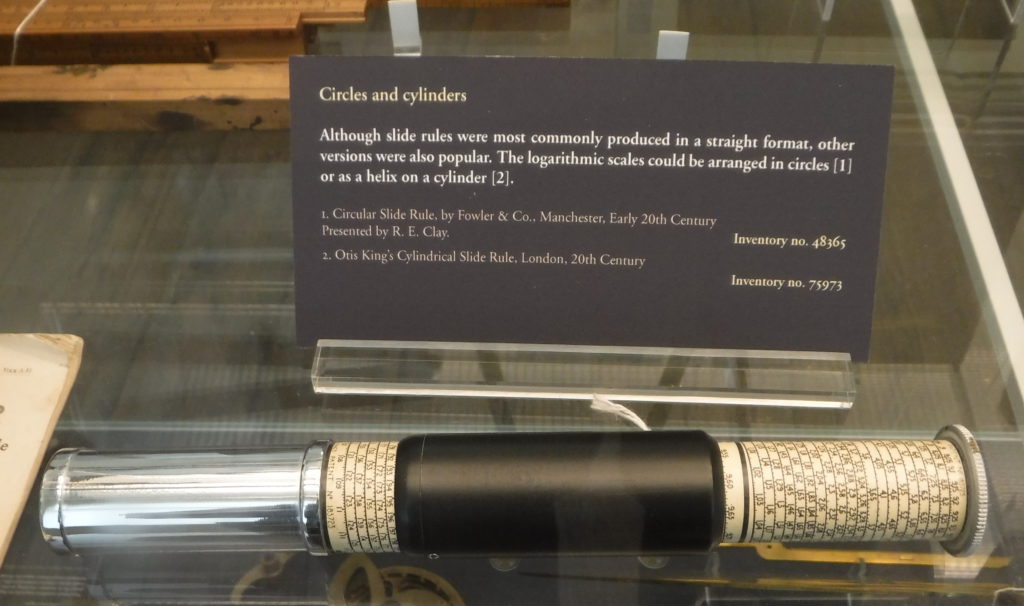
I own this exact model of cylindrical slide rule that’s on display in the History of Science Museum. I probably used it in my O-level maths exams, as it was faster than log tables. What’s more, it’s in the same case with bits of Babbage’s difference engine.

The difference engine was intended to calculate mathematical tables, by performing iterative calculations and stopping when a certain condition was reached. Babbage spent twenty years and twenty thousand pounds of government money, and never actually got the thing to work. His design was sound, but the engineering of the early 19th Century was not up to it. Still, the difference engine is often regarded as the first computer, and Ada Lovelace, who helped Babbage with the software for it, as the first computer programmer.
Here’s an inventor who actually got something to work. This is one of Marconi’s first radio receivers.
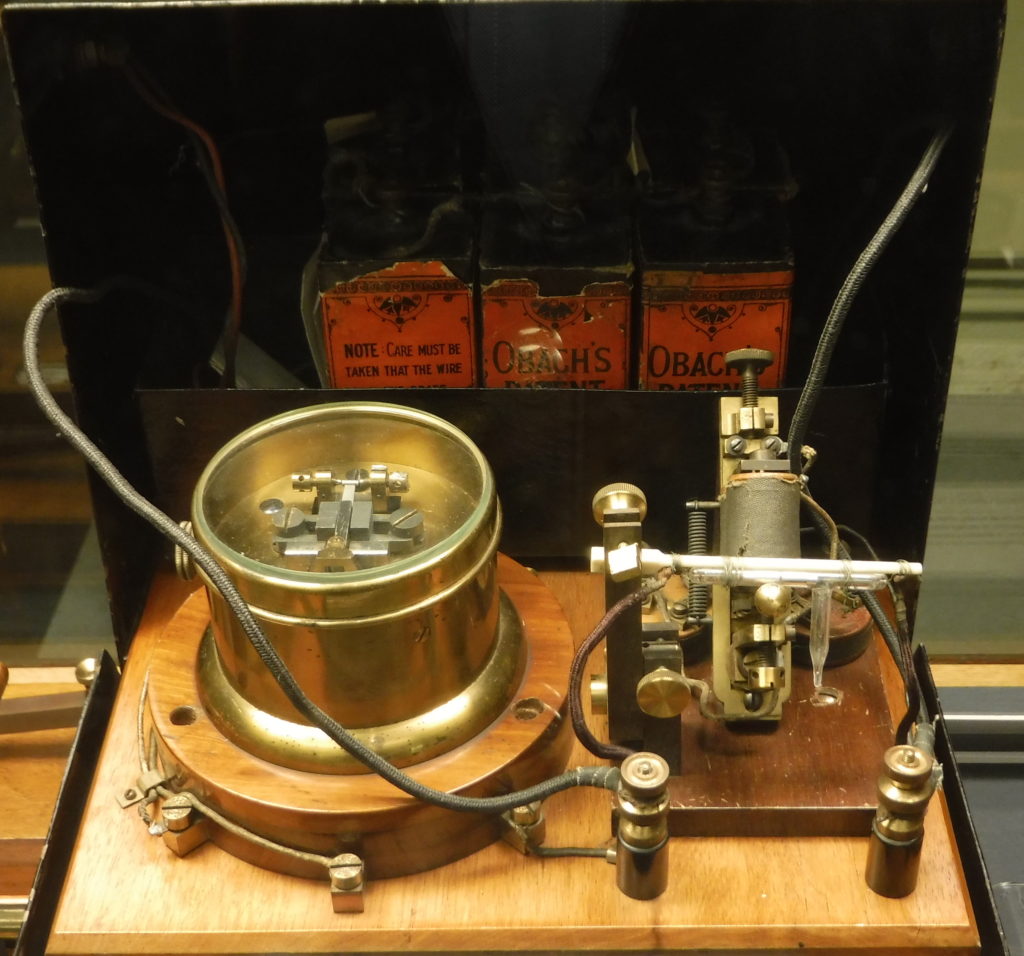
In 1896 Marconi came to England to try to raise capital to turn his experiments with wireless transmission into a marketable product. The customs official at Dover took one look at the contents of his baggage and referred him directly to the Admiralty, though I’m not sure if it was because they thought he was a mad scientist who had to be watched or, a potential asset. Anyhow, the Admiralty introduced him to the chief engineer at the Post Office, and the two of them used this radio at a public demonstration in London. Marconi carried the radio to different parts of a lecture hall, and showing that it rang a bell when a button on the transmitter was pressed. He became an instant celebrity and was able to raise funds to start his company.
I liked this. It’s a silver exam crib from 1665.

On this side it has how to solve a quadratic equation by completing the square, and the other has a compound interest calculation.
Here’s some more mathematics.

This is the blackboard used by Einstein in a lecture he gave in Oxford in 1931. Using a simple model he used the recently discovered red shift in distant galaxies plus the theories of relativity to estimate the age of the universe. The last line says the universe is between ten billion and a hundred billion years old. The current estimate is 13.82 billion years, so Einstein had the order of magnitude correct.
They have more stuff owned by famous people. Isambard Kingdom Brunel’s sextant, James Watt’s compass, Lawrence of Arabia’s camera, Lewis Carroll’s photographic plate making equipment, and this, Elizabeth I’s astrolabe.

This was a present to her from Robert Dudley, Earl of Leicester (remember him) back in the days when flowers and a box of Milk Tray were not going to cut it. Neither did the astrolabe, apparently.
Another one of Elizabeth I’s advisers was responsible for this.
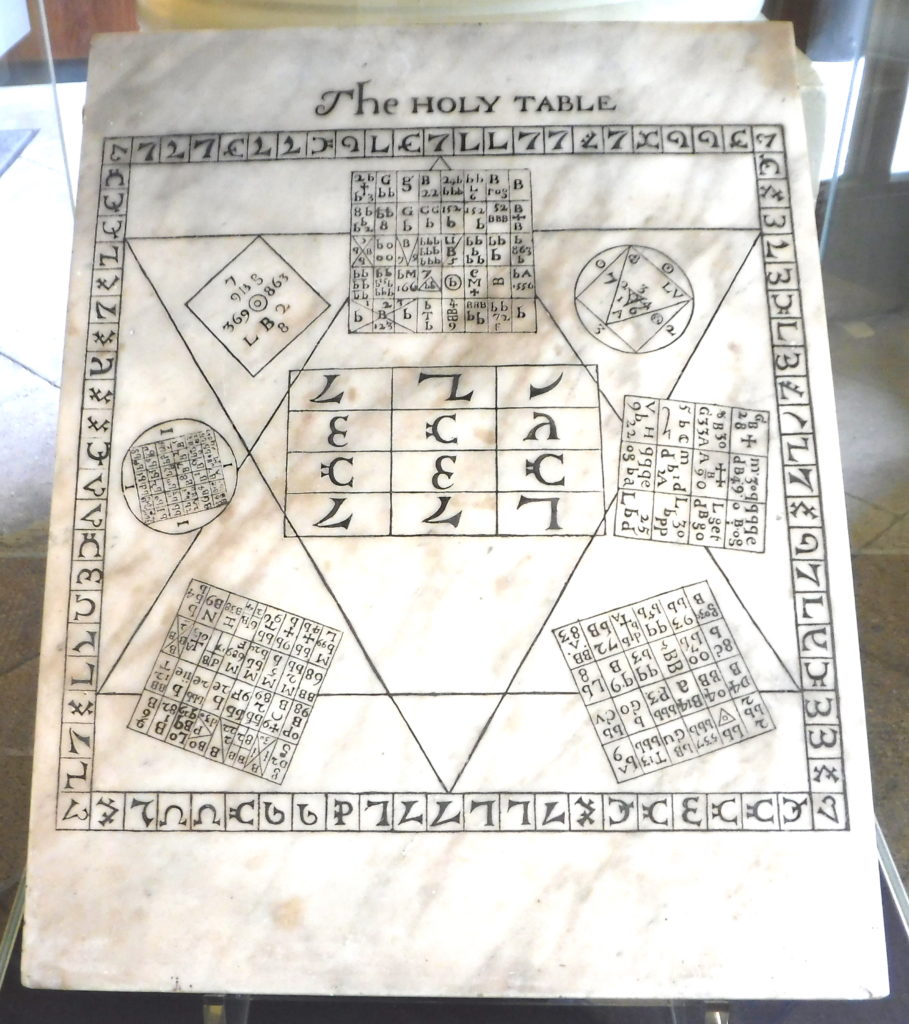
John Dee was a mathematician, astrologer, astronomer, alchemist, magician, and all round nutter. (Oh, look, they must have got the Oxford comma back again.) This is a marble copy of the wooden table that he devised with the aid of a scryer (what we would call a medium) in order to talk to angels. Angels, you see, still have the divine knowledge that was in the Garden of Eden and was lost by humanity when Eve ate the wrong banana. Yes, that’s right, the Tree of Knowledge of Good and Evil wasn’t an apple tree. It was actually a banana, and Eve ate it from the wrong end. I know because an angel told me.
Here’s the only surviving spherical astrolabe.
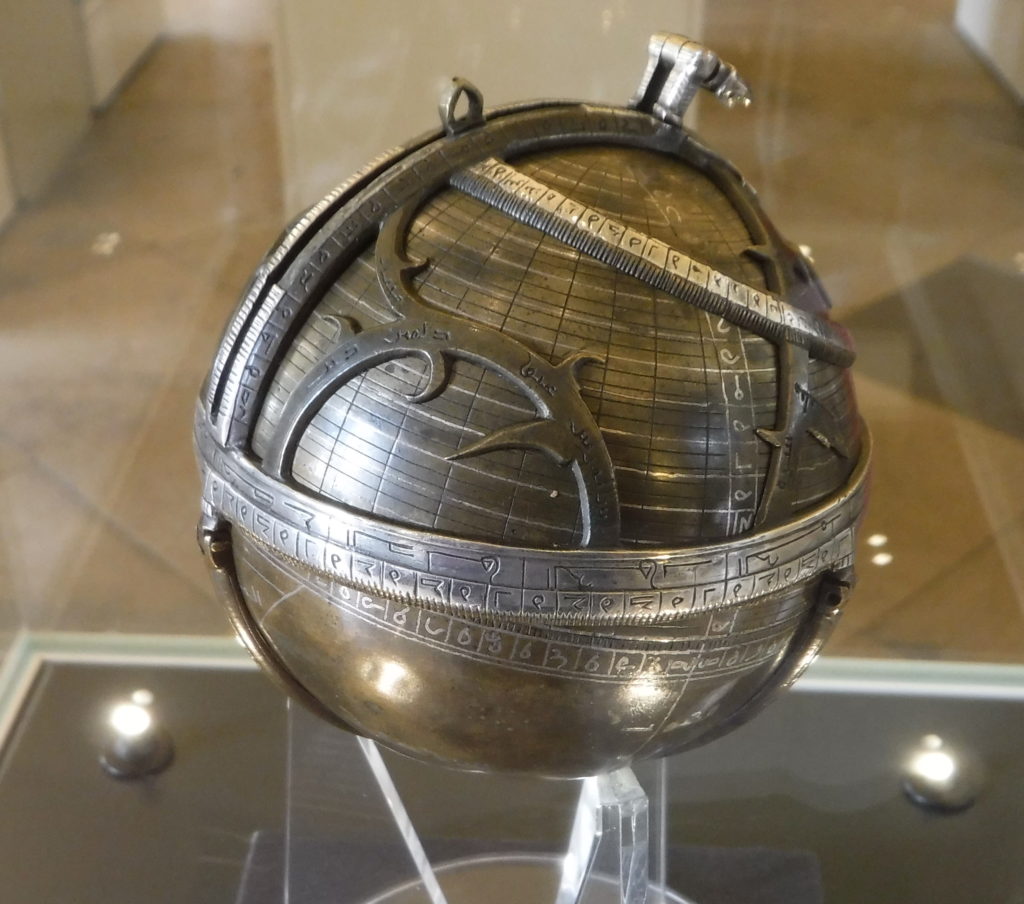
It’s from Eastern Islam, some time in the early 1400s.
Here we have some scientific apparatus cobbled together out of bedpans and biscuit tins.
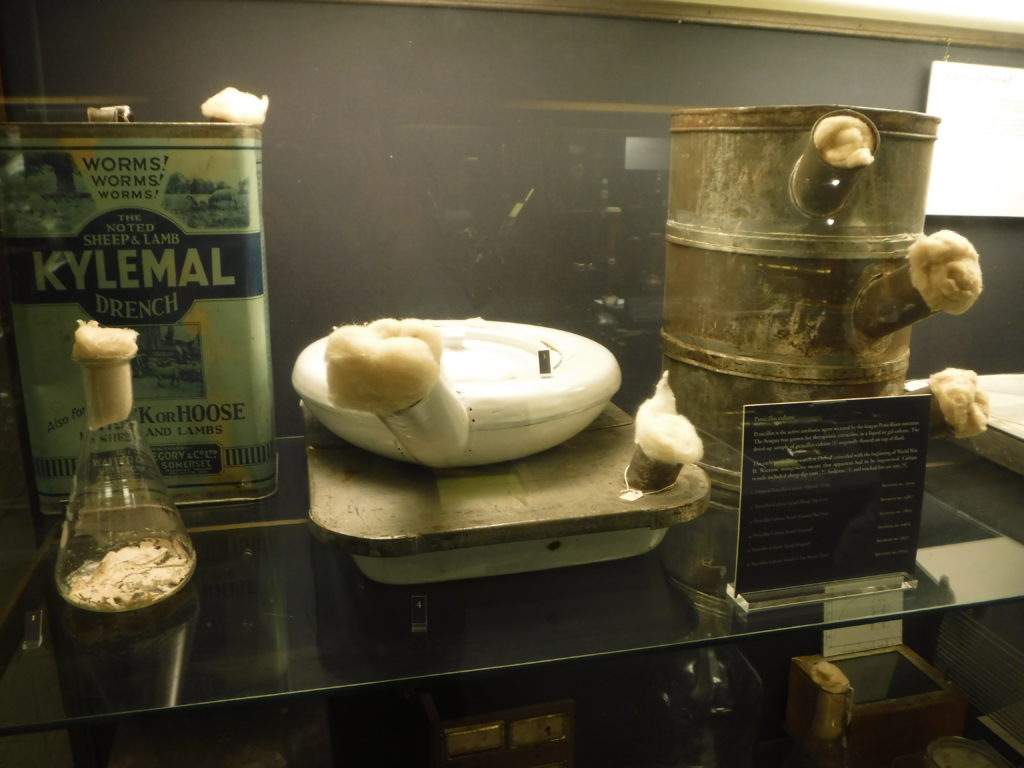
After Alexander Fleming and his students identified the antibiotic properties of penicillin, a team at Oxford set to work to see if it could be used medically. Their first problem was manufacturing it in sufficient quantity to be used as a drug. This was during the Second World War, and all the money was being spent killing people. There was none left over for the medical research that would save millions of lives, so the equipment to manufacture penicillin was put together out of whatever was available. The chances are very high that you or someone you know had their life saved by antibiotics, thanks to those bedpans and biscuit tins.
After the science museum, we went on the the Oxford Botanic Garden. This is in one of the greenhouses there.

The plant were grouped by family or usage. A large section was given over to current medicinal plants with beds labeled things like Oncology and Gastroenterology. Then there was this.

Sometimes they just went for looks, though.

Their “Merton Borders” are interesting combination of research with looks.
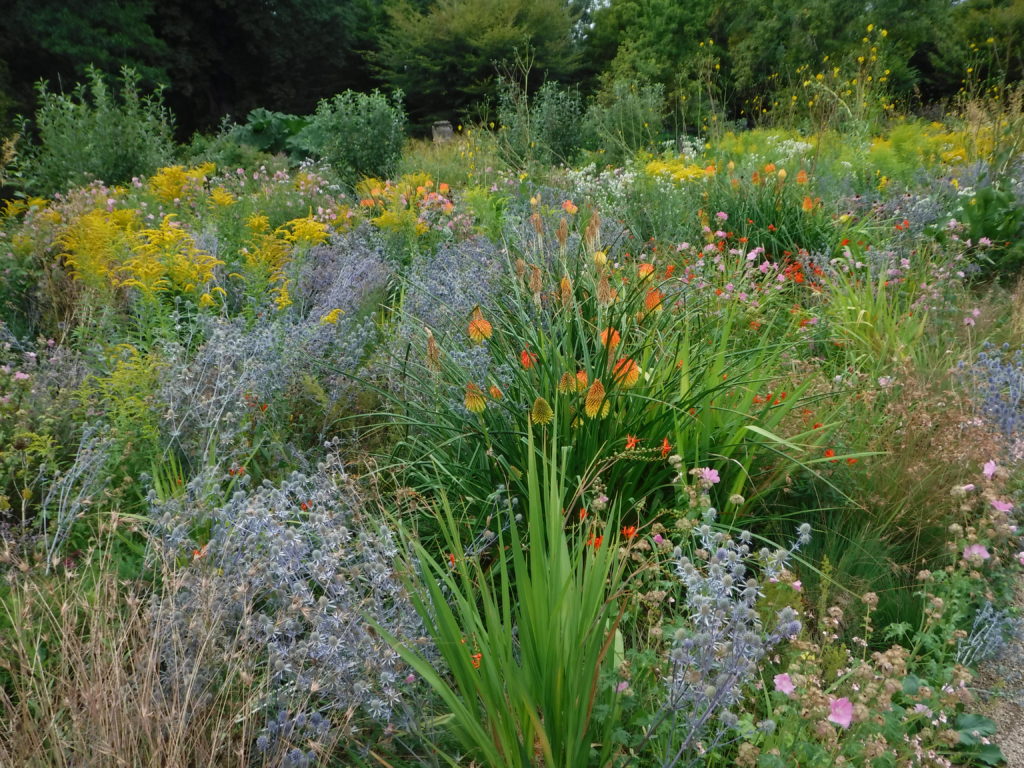
The aim is to create a good looking and sustainable plant community that once established does not require fertilizer or irrigation. This could be the ornamental garden of the future.
5 thoughts on “The Bedpan That Saved Your Life”
Attended a talk at the Computer History Museum a few years ago by the person who led the team building the Babbage’s engine. He said that the probably reason for Babbage’s failure was not in the engineering and parts but in project management. The engine was too complicated for the people of that era to organize the build.
I forgot to put my name in my comment above.
Greg Edwards
I agree the gardens are very attractive considering they have two purposes. Looking good without irrigation means something different here though since it doesn’t rain at all for about 3 months in the summer.
Thinking of you at every garden, Marina!
Who knew?! Good stuff, man.
Jolly entertaining, indeed!